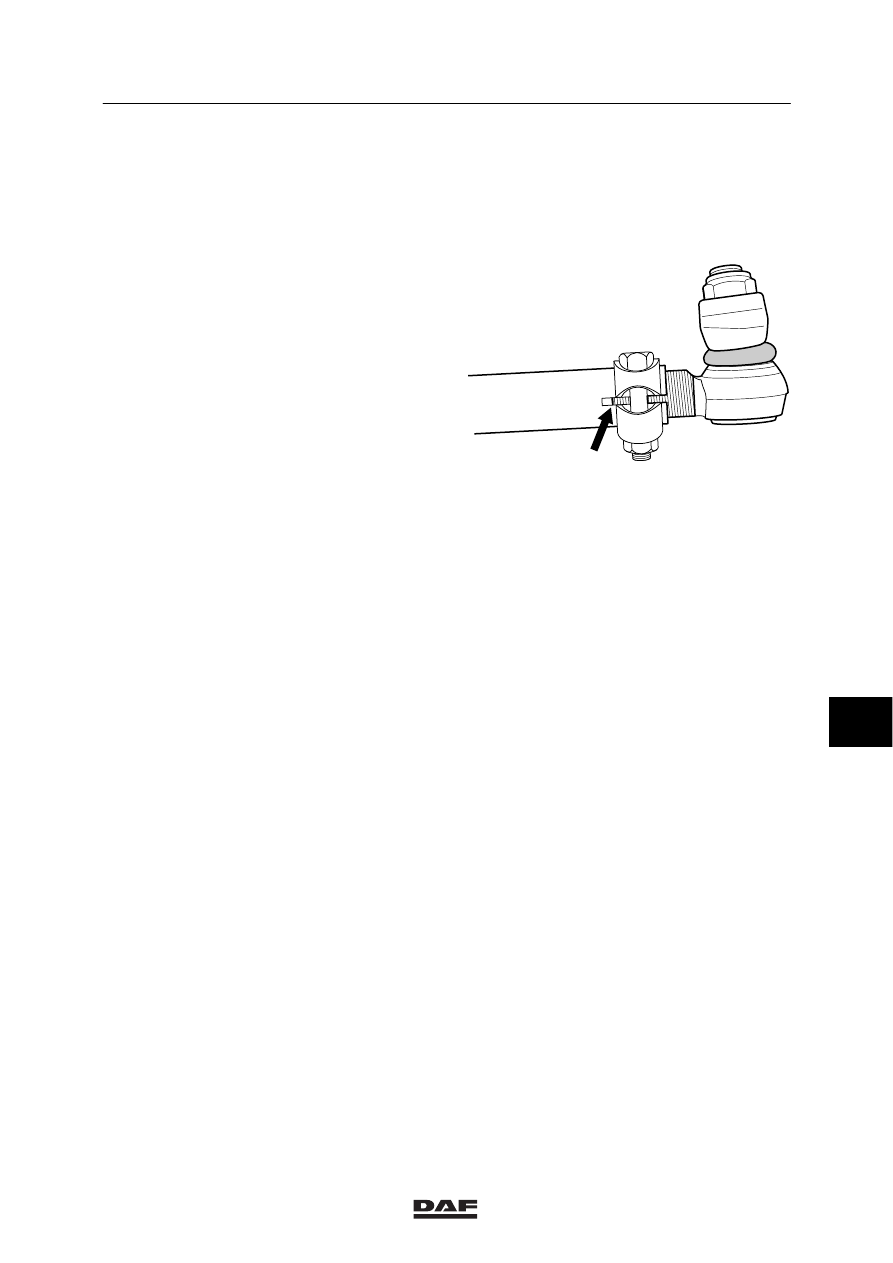DAF LF45, LF55 Series. Manual - part 543

7
LF45/55 series
Inspection and adjustment
FRONT AXLE, 152N
2-9
Adjusting toe
1.
Slacken the bolts of the clamping brackets
until the track rod can be rotated.
2.
Set the correct length (see “Technical data”)
by lengthening or shortening the track rod.
Note:
Make sure that the threaded ends of the
ball joints are not pushed too far off the
track rod. The clamping bracket should
always fully engage the ball-joint screw
thread. See the drawing.
3.
Clean and check the clamping-bracket
bolts. If the bolt is corroded or damaged, it
must be replaced.
Replace the self-locking nut.
4.
Tighten the clamping bracket bolts to the
specified tightening torque, see “Technical
data”.
5.
After this, check the toe once again.
6.
Make sure that the clamping brackets do
not come into contact with the axle housing
at maximum wheel deflection. Turn the
clamping brackets if necessary.
The clamping bracket may have any
position.
S7 00 539
8
ᓻ 200322